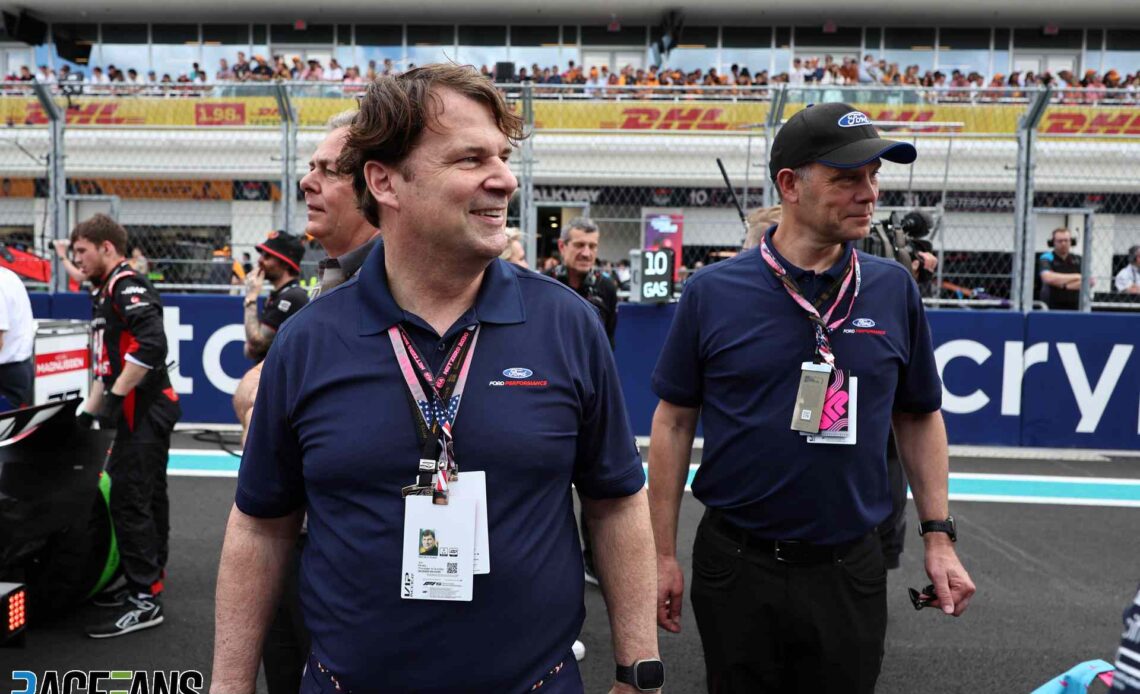Ford has high expectations for its return to Formula 1 with Red Bull in two years’ time.
Red Bull achieved unprecedented success last year, winning all bar one of the 22 grands prix. Before the season began it confirmed it would develop a power unit for the new 2026 regulations in conjunction with Ford.
The manufacturer’s CEO Jim Farley said yesterday he is encouraged by the progress which has been made almost a year since the deal was announced.
“I had a chance to spend a lot of time with the team in Milton Keynes and and with [chief technical officer] Adrian Newey,” he said at Ford Motorsport’s season launch yesterday. “I think we’re on track.
“Even though [2026] sounds like a long way away, we have a lot of work to do on the powertrain, but I’m really happy with the progress. I wish I could tell you more, but I would say we’re on track.”
Red Bull has won the constructors’ championship for the last two years running and Max Verstappen clinched his third consecutive drivers’ title last year. Farley says Ford have “got the best freaking team, it’s that simple,” and has high expectations for them.
“We’ve got the best drivers, we’ve got the best technical support. We have the best of Ford and around the globe to support them. But the team, the powertrain team that they’re building in Milton Keynes is absolutely top notch. We are going first class to the very top of the podium.”
Advert | Become a RaceFans supporter and
Ford last competed in F1 in 2004 with its own team, run under the Jaguar brand, before selling it to Red Bull. Farley compared its coming return to its successful period as an engine supplier in the sixties and seventies, when its DFV dominated F1.
“The best aerodynamics in the world are in Formula 1, the best telemetry, the best digital diagnostics… and actually, we need all those things for electric and digital cars. So it’s actually going back to the seventies with a pure tech transfer.
“This is not like ‘our team’, we’re going there to literally transfer technology. We can offer battery tech for them because in ’26 we’re going to go to 50% electric [power] and they need high-discharge batteries. And we do that in NHRA, for example. And on the other hand, we can get telemetry, digital diagnosis as well as aero, which we can put in our production electric cars to make the batteries smaller.”
“It is a lot of R&D,” he added. “And they are the best in the world in a lot of…
Click Here to Read the Full Original Article at RaceFans…

